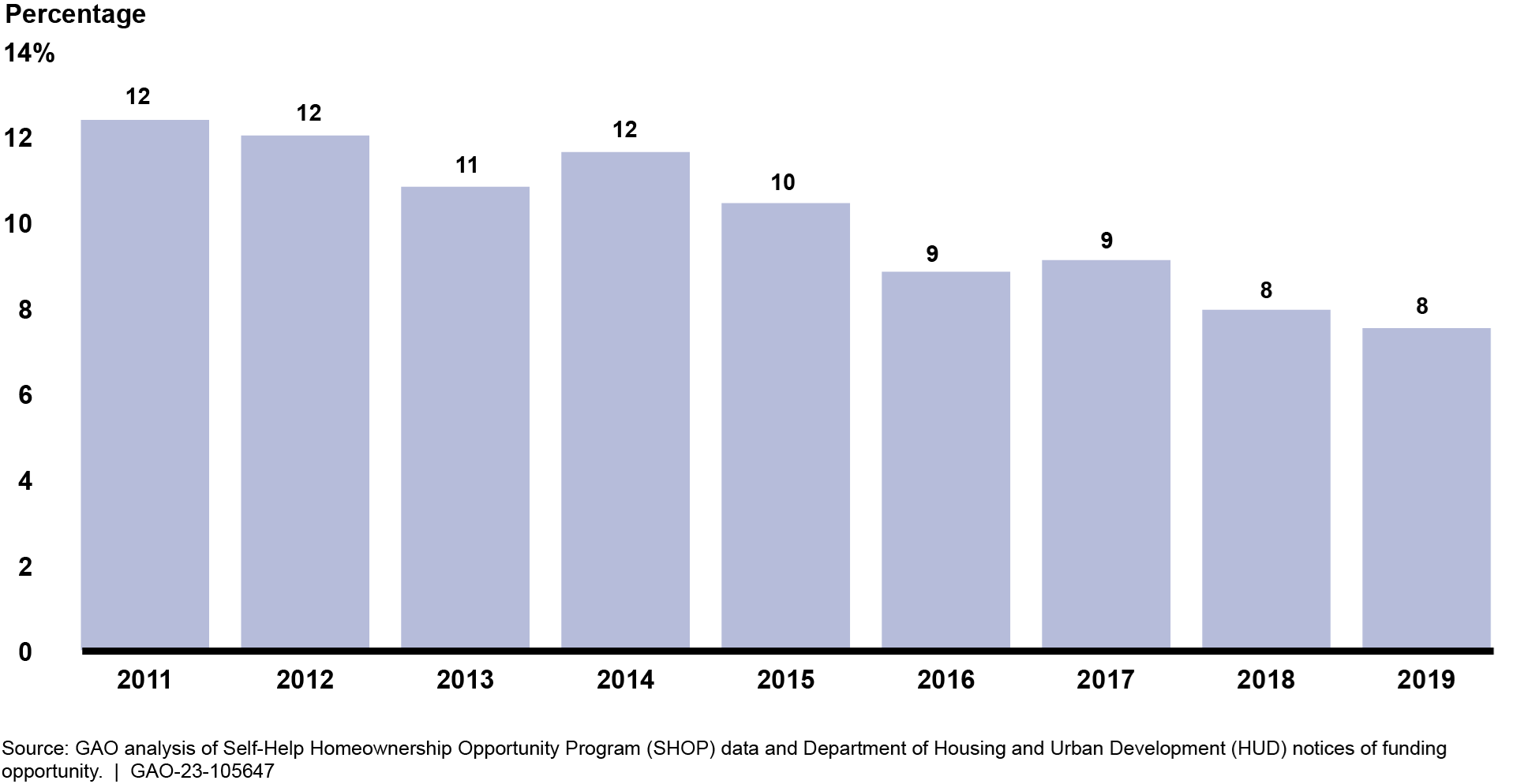Affordable Housing: Information on the Self-Help Homeownership Opportunity Program
Fast Facts
In July 2023, we reported on a Department of Housing and Urban Development program that gives grants to eligible nonprofits to help develop housing units for low-income buyers.
This report provides more information on the program and potential changes in the program's buying power.
Specifically, the median sales price of housing units in this program increased from about $120,000 in 2011 to nearly $200,000 in 2019. But the program's per-unit spending limit remained at $15,000 during this period—which went much further in 2011 than it did in 2019.
We also examined how potential changes to the per-unit spending limit could affect the program.

Highlights
What GAO Found
The Department of Housing and Urban Development's (HUD) Self-Help Homeownership Opportunity Program (SHOP) is a competitive federal grant program that awards funds to eligible nonprofit organizations to help develop affordable housing units for purchase by low-income families. Eligible grantees may use SHOP funds for acquiring land on which to build a home and for improving infrastructure (the installation, construction, or improvement of utilities or other infrastructure). HUD also sets a limit on the amount of SHOP funds grantees can spend, on average, for an individual housing unit. The per-unit spending limit was $10,000 from fiscal years 1998 through 2003, and $15,000 from fiscal years 2004 through 2021, and has been $25,000 since fiscal year 2022.
Since fiscal year 1998, the number of units delivered to qualifying families and individuals fluctuated before declining to 563 in fiscal year 2015. During the same period, the cost of land and infrastructure inputs (such as concrete and metal construction products) increased. For example, land prices in some areas of the country in which SHOP grantees operate more than doubled from 2012 to 2019. However, SHOP's per-unit limit generally did not keep pace with these market increases, leading to a decrease in SHOP's purchasing power.
GAO analysis of SHOP and market data illustrates this reduction in SHOP's purchasing power due to the increases in market prices. For example, the median sales price of SHOP-assisted units increased from about $120,000 in 2011 to nearly $200,000 in 2019. SHOP's per-unit spending limit of $15,000 during this period would have contributed about 12 percent toward the median sales price in 2011 but only 8 percent in 2019.
Relative Contribution of SHOP’s Per-Unit Spending Limit toward Median Sales Price of SHOP-Assisted Units, Fiscal Years 2011–2019
Why GAO Did This Study
The joint explanatory statement regarding the Consolidated Appropriations Act, 2022 provides for GAO to evaluate various aspects of SHOP, including how increases in the costs of eligible activities have affected affordable housing development. This report provides information on trends in the use of SHOP funds and potential effects of a market-based per-unit spending limit.
For more information, contact Jill Naamane at (202) 512-8678 or naamanej@gao.gov.
